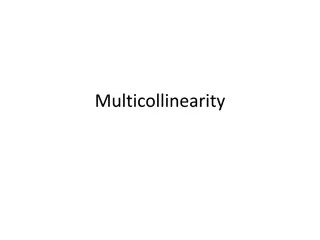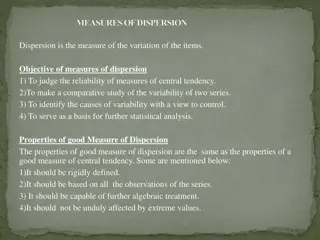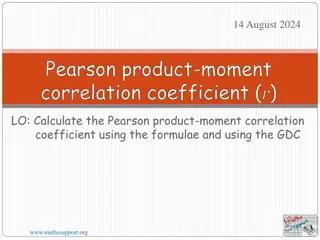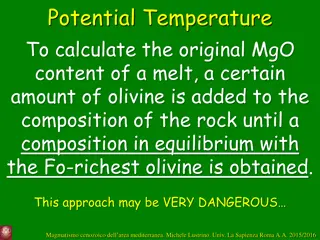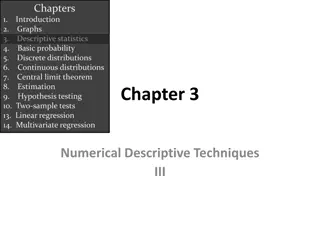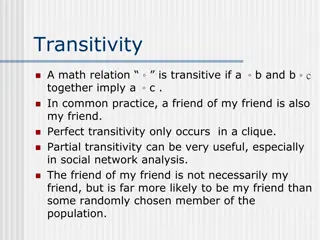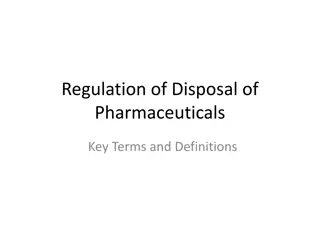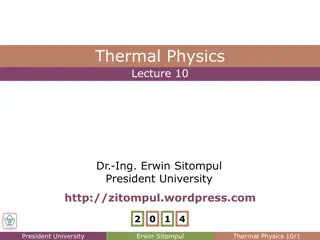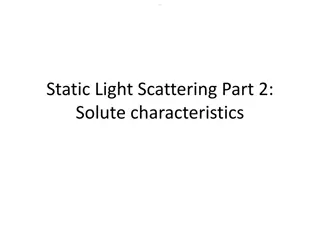Understanding Partition Coefficient in Pharmaceuticals
Partition coefficient (P.C.) is crucial in pharmaceuticals for various reasons such as preserving oil/water systems, drug distribution in the body, extraction processes, and dosage form formulations. It involves the distribution of a solute between two immiscible liquids based on equilibrium expressions. The coefficient plays a significant role in the absorption and distribution of drugs, as well as in dosage form designs. Notable applications include preservation effects, extraction procedures, and drug absorption through lipid membranes. Understanding the impact of ionic dissociation and molecular association on the partition coefficient is key in pharmaceutical practices.
Download Presentation

Please find below an Image/Link to download the presentation.
The content on the website is provided AS IS for your information and personal use only. It may not be sold, licensed, or shared on other websites without obtaining consent from the author. Download presentation by click this link. If you encounter any issues during the download, it is possible that the publisher has removed the file from their server.
E N D
Presentation Transcript
PARTITION COEFFICIENT P.C. Lab 5
if an excess liquid or solid is added to a mixture of two immiscible, or partially miscible liquids it will distribute itself bet. The two phases so that each become saturated. If the sub. Is added in amount insufficient to saturate the solu. It still become distributed bet. The two layers in a definite conc. ratio . So equilibrium expression K =C / C Where C & C is equilibrium conc. Of the sub. In solvent 1& solvent2, respectively. While K is equilibrium constant also known as distribution ratio, distribution coefficient or partition coefficient at constant temp.
example/ when boric acid distributed between water & amyl alch. At 25 c , the conc. In water is (0.0510 mole /L) & in amyl alch. Is (0.0155 mole/L) what is the distribution coefficient? K = C H O /c alch. = 0.0510/0.0155 =3.29 Or K = c alch. / C H O = 0.0155/ 0.0510 =0.304
Importance of P.C. to the pharmacist:- 1)the preservation of oil / water system. 2)absorption& distribution of drug through the body. 3)In the extraction process to remove a particular solute From homogeneous system. 4)In dosage form formulation.
preservation -it will be explained by knowing the effect of ionic dissociation & molecular association on P.C. as the solute can exist partly or wholly as associated molecule in one phase or it may dissociate into ions in either of the liquid phases. the distribution low applies only to the conc. Of the species common to both phases , namely, monomers or simple molecule of the solute. e.g. when benzoic acid used as preservative it is distributed between oil phase & water phase & the distribution law applies only when it is neither associated in oil phase nor dissociated in aqueous phase .
extraction:- To remove a particular solute from homogeneous solution by adding another solvent that is immiscible with the first one .
3) Absorption & distribution of drug through the body :- The passage of d. through the lipid membrane & interaction with the receptor site sometimes correlates with the P.C. 4)Dosage form design :- In oily type supp. Base which melt at body temp. , the release of the drug depends on P.C.
Experimental work :- Determination the partition coefficient of iodine between water and chloroform.
Procedure:- in dry Stoppered conical flask (iodine flask) put 20 ml of 1% iodine in chloroform (use burette). Add 50 ml D.W. to it. The flask is the thoroughly shaken from time to time half hour after equilibrium is established ,allow to stand for complete phase separation, this need another half an hour. 10 ml of the sample are taken from the upper aqueous layer, care is taken to avoid touching the chloroforming layer. Then titrate against 0.02 N sodium thiosulphate .the end point is the disappearance of light brownish color. 5 ml are taken from the organic layer (lower layer) .the inside wall of the pipette must be kept dry as it passes through aqueous phase by placing the finger tightly over the upper end of the pipette. Then titrate against 0.1 N sodium thiosulphate. Before titration, add 5 ml of 10% pot. Iodide to facillate extraction of I2 from the organic layer and it's titration with aqueous sodium thiosulphate. The end point is the disappearance of the brownish color.
Calculation: Iodine distributed between the aqueous phase and chloroformic phase. Aqueous phase:-the no. of ml of sodium thiosulphate (0.02N) consumed in the titration is equivalent to the amount of Iodine present. (Na2S2O3) V1 X C1 = V2 X C2 (iodine) E.P X 0.02 N =10 X N2 N2 =conc. Of iodine in water Chloroformic phase:-the no. of ml of sodium thiosulphate (0. 1N) consumed in the titration is equivalent to the amount of Iodine present. (Na2S2O3) V1 X C1 = V2 X C2 (iodine) E.P2X 0.1N = 5 X N2 N2 =conc. Of iodine in chloroform Conc. Of iodine in CHCl3 Partition coefficient = --------------------------------------- Conc. Of iodine in water



